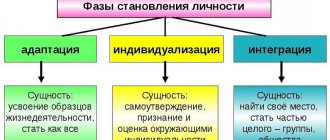Everything you need to know about conflict situations at work. A useful article about resolving conflict situations with your employees.
Everyone faces conflict situations at work. Sometimes healthy conflict is beneficial, leading to discussions and opening up new ways to solve problems. But there are situations where conflicts negatively affect productivity and engagement, which overall has a negative impact on team performance and the effectiveness of the entire company.
In this article we will deal with the topic of conflict behavior and tell you how to behave correctly in a conflict situation.
What is conflict behavior
Conflict is a clash between people due to differences in views, interests, goals, perceptions that arise in the process of social interaction. Simply put, a situation where several people or groups have different views and cannot come to an agreement.
Conflict behavior is the manifestation in emotions, conversation and actions of a negative reaction to a conflict situation. This behavior is a consequence of conflict.
Conflicts do not arise out of the blue; from root causes to resolution, they go through as many as 5 phases:
- The prelude to conflict includes all the factors due to which conflict may arise. Lack of mutual understanding, differences in interests, culture, religion, education - all this contributes to the emergence of conflict.
- Triggering event. Conflict does not arise by itself. There must be an event that provokes it.
- The initiation phase is actually the period when the conflict has already begun. Inflexibility in opinion, verbal disagreements - all these are warning signals indicating that the conflict has already begun.
- The differentiation phase begins when people express their grievances and show dissatisfaction to each other. At this stage, the causes of the conflict are raised.
- Resolution phase. People should try to compromise and resolve the conflict. At this stage, various options for resolving the conflict are considered.
The nature of conflict agents and their properties
Conflicts arise due to unmet needs and differences of views between people.
Modern psychologists believe that in many situations conflict is necessary for effective interaction between family members and the work team. The main thing is to understand its cause and be able to manage it competently. Properly constructed conflicts make it possible to identify hidden contradictions and disagreements, find methods to overcome them and establish even more harmonious interaction.
There are situations when the conflict is exclusively negative. It is a manifestation of threat, hostility, resentment or envy. Often this opinion is justified and fair.
The intentional use of conflict agents manifests itself in different ways, for example:
- the desire to insult a person by showing open distrust;
- emphasizing the differences between oneself and the other participant in communication;
- an attempt to rise above the background of the interlocutor;
- emphasizing one's own merits and belittling the merits of other people;
- devaluation of values, hobbies and other important parts of the opponents’ personality.
Such negatively colored conflictogens are used to solve their own psychological problems. They are often based on their own low self-esteem, although the instigator of the unpleasant situation may not realize and deny this.
Causes of conflict behavior
- Difference of opinion. It is a conflict between the ability to narrow down the number of possible solutions to a problem by applying logic and knowledge and thinking outward.
- Position. This is a situation where the wrong person is promoted.
- Inconsistency. The employee is required to engage in activities that do not meet his needs or interests.
- Incompatibility. Someone adheres to goals and views that do not correspond to the worldview of another and exclude the satisfaction of his professional needs and desires.
- Economy. Insufficient employee benefits.
- Stress. Conflicts from stress from external sources.
- Poor or inadequate organizational structure and lack of teamwork.
- Power. Often a conflict for power occurs when several people apply for a leadership position.
- Weak leadership. Conflict is inevitable when someone supervises a more qualified and experienced employee.
- Arbitrary interpretation and application of rules and policies. Lack of transparency and openness causes dissatisfaction among employees.
May provoke...
Conflict is a provocative factor. Any object, thing, look, action or inaction can provoke a conflict It happens that a person, having become a source of conflict, says: “I didn’t do anything” or “I didn’t say a word.” As we can see, this does not mean that he did not use a conflict agent.
The key word here is “may.” It can provoke, but is not a provocation in itself; it only works in a certain context. This is why conflictogens are dangerous. It can provoke, or it can remain an ordinary everyday object, a word, an action. Therefore, it is not always possible to identify and exclude such factors. It is important to take into account one more concept - “ provoking moment ”. This is the context in which the conflictogen is put into action.
For example, it can be argued that the provoking moment will be the accumulation of conflict agents in the company. Or one could also argue that corporate team building events minimize the risk of conflict.
Looking ahead, let's name some conflictogens: categoricalness, banter, violation of ethical rules, the habit of giving advice, words like “you should”, “you don’t understand”, any symbols of belonging to any ideological group. By themselves, they may not even cause irritation, but sometimes, under a certain set of circumstances, any of the above can cause a real fire.
Conflict management training first introduces the theory of conflict, after which it teaches through examples. Let's return to theory, after which we will list the types and examples of conflictogens.
Why is it important to be able to resolve conflicts in the workplace?
Conflicts in the workplace negatively affect team relationships, productivity, and take away time and energy that can be spent on more important things.
When employees are involved in conflict, they tend to lose concentration and have poor focus on work. They put all their energy into fighting each other, and as a result, the goals of the organization remain unprioritized.
Conflicts also lead to disrespect and unnecessary tension in the team. When employees talk badly about each other, it disrupts the positive atmosphere within the organization and prevents everyone from working.
Regardless of the types of conflicts in the workplace, ignoring them and hoping they will go away can be costly to a company.
Consequences of work conflicts for leaders:
- Spent time listening to people's complaints
- Lost productivity as people spend more time worrying about conflict than focusing on organizational goals
- Truancy
- Staff turnover
If you are involved in conflict, you are likely to feel dissatisfied, frustrated, and resentful. Unfortunately, as a rule, most people are not able to leave these feelings at work, so their loved ones also suffer from conflict situations.
In any business there will be employees who don't get along from time to time. Due to differences in their personalities, lifestyles, opinions or some other factors, sometimes employees simply cannot work as a team. And when there is disagreement in the workplace, it affects everyone.
Managing conflict among employees constructively can lead to healthy competition, process improvement, innovation, and increased creativity.
Working with conflict agents
It is possible to reduce the frequency and severity of conflicts. In the work collective and family, this can be achieved by identifying the causes and forming an adequate attitude towards the factors in the development of conflicts.
The work of a psychologist is carried out in several stages:
- identifying triggers for conflict situations;
- developing the skill of understanding one’s own and other people’s needs;
- learning to use the most clear and correct statements.
The work requires effort on the part of not only the conflict specialist, but also his client (group of people). But efforts to create a psychologically comfortable environment in the family and team always pay off.
Types of conflicts
Interdependence Conflicts
These types of conflicts occur when one employee's work depends on the work of another. For example, if the salesperson is always late entering monthly sales data, the accountant is always late with the reports.
Interdependence conflicts can be easily overcome if:
- Employees are well versed in delegation skills
- Able to conduct complex negotiations and come to agreements
- Missing deadlines comes with consequences
Conflicts based on interdependence arise due to work reasons. Simply put, employees fight not because they do not share each other’s ideas, but because one lets the other down.
Different approaches
Such conflicts often occur because employees have different views on how to achieve a goal. For example, one employee wants to complete work quickly (task-oriented) and move on to the next task as quickly as possible. While the other is more concerned about tailoring the product to the client and taking their opinion into account in the process (people-oriented).
Different approaches to completing tasks can be beneficial to a team's performance, so it is important to find compromises and use differences to benefit rather than harm.
Different management styles
Leaders lead their teams differently. Team members who have to deal with different leaders throughout the day can become confused and irritated by different leadership styles. For example, one leader may be more open, while another is strict and requires strict subordination.
To avoid these types of conflicts, make sure that the company's leaders have the same values and views on basic management issues. Leaders must be consistent in decisions, respect subordinates and remain humane. An autocratic leader can lead to decreased employee engagement and satisfaction.
Personality conflicts
Personality clashes are the leading cause of conflict in the workplace. These types of conflicts arise from emotions and beliefs about someone's motives and character. For example, a team leader criticizes someone for being late because he thinks the team member is lazy and disrespectful. A team member sees the team leader as an unfair and biased person.
You can cope with personal conflicts only by looking at the situation from a different angle, from the side of another participant in the conflict. Most people in such situations shift responsibility onto others, but do not see that they themselves are partly to blame. In personality conflicts, most often, both sides are unfair to each other.
Test for working through personal conflict
- Think about the conflict you currently have. Take a piece of paper and draw a line down the middle.
- In one column, write down everything that doesn't suit you. All the feelings, thoughts, judgments, labels, conclusions that come to mind.
- In another column, write down all the real facts. Facts are observable, objective, concrete actions and information.
- Then write down how your reactions or actions might have affected the situation.
To distinguish between facts and personal judgments, use a simple example: a blue sky is a fact, a beautiful colored sky is a personal judgment.
As you review the list, you may find that your claims are not supported by the facts. That you have made many assumptions and interpretations about what another person's behavior might mean, but not the fact of what it means. This exercise is designed to help you become more objective in your current situation.
Conflictogens: classification
Conflict agents are often used in everyday communication. They manifest themselves verbally and non-verbally.
A grin in response to the words of the interlocutor, arms crossed on the chest and a glance from under his brows are non-verbal manifestations of aggression. The most intense non-verbal conflictogen is open ignoring. For a person who is not noticed, it is very painful and is associated with the fear of rejection, which begins in early childhood.
Verbal conflictogens are associated with the manifestation of open or hidden aggression in statements, for example:
- what are you talking about?!
- can you hear yourself?
- but who would speak;
- Do not talk rubbish;
- I don't even want to talk to you.
Verbal manifestations of aggression also include open devaluation of a person and his achievements. Aggression is also hidden behind comparison with others or with oneself not in favor of the interlocutor, discussion of third parties in their absence.
The classification of conflictogens identifies 5 main reasons that provoke aggression towards other people.
Manifestations of aggressiveness
Aggression arises as a result of frustration, when a person faces insurmountable obstacles, has unfulfilled desires and unmet needs. A prolonged stay in frustration provokes an increase in anxiety, increases the feeling of one’s own inferiority, and awakens aggression towards other people.
Striving for Excellence
Gaining power over others, the desire to emphasize one’s own superiority arises against the background of a complex of one’s own inferiority deeply hidden in the unconscious. People striving for superiority are hostile to others, self-confident, boastful, malicious, and envious.
They often structure situations so that others see their grandeur. External shine and approval from strangers are much more important than real success.
Selfishness
For egoists, only their own interests and values are important. Conflict situations arise against the backdrop of the fact that a selfish person seeks to satisfy his needs by infringing on the interests of other people - deceiving them, shifting responsibility for his own mistakes, withholding information.
Breaking the rules
Any rules establish the framework within which a person can act so as not to cause damage to society, family, or team. By violating the boundaries, the instigator of the conflict makes it clear to others that he does not respect their interests.
Unfavorable set of circumstances
Often conflicts flare up suddenly. The reason for such situations is a lack of resources among their participants, which arose due to severe stress, fatigue, and physical illness.
Styles of conflict
In order to understand how to resolve a particular conflict, you need to have an understanding of conflict styles.
- Competition is a style that places one's own needs above the needs of others. He relies on an aggressive communication style. Those who use a competitive style seek to control the discussion. They fear that losing control will lead to decisions that do not meet their needs. Competition, as a rule, leads to retaliatory measures, aggravation of the situation and increased tension in the team.
- Accommodation, also known as smoothing, is the opposite of competition. People who use this style defer to others while trying to be diplomatic. They tend to allow the group's desires to suppress their own, which are rarely discussed at all because maintaining the relationship is a priority.
- Avoidance is a common reaction to a negative attitude towards conflict in general. Conflict avoiders think that if they don't bring up the issue, things will go away on their own. But, as a rule, feelings are suppressed, opinions remain unexpressed, and the conflict grows until it can no longer be ignored. Because grievances remain unexpressed and relationships inevitably deteriorate, the other party often does not even understand what happened.
- Compromise is an approach to conflict in which people discuss their desires and reach an agreement. Although compromise is the best solution, it is usually unsatisfying. Each side is still committed to its own views and does not always understand the other side well enough.
- Collaboration is the coming together of individual needs and goals to achieve a common goal. Often referred to as win-win problem solving, collaboration requires communication to achieve an optimal solution. Collaboration provides the opportunity to reach consensus, integrate needs, and potentially exceed the capacity budget that previously limited conflict.
By understanding each style and its consequences, you are more likely to resolve conflict in the most appropriate way:
- If a competing style is used, others may be forced to accept a “convenient” decision, but this acceptance may be accompanied by resentment.
- If we adapt, the relationship can be good, but there remains disappointment that our opinion is not taken into account.
- If we compromise, then good relations will remain, but grievances may remain for a long time.
- If we collaborate, we are likely to be more confident in our chances of working together productively and maintaining a healthy relationship.
- And if the conflict is not discussed at all, both sides may remain in the dark about the real issues and problems, which is the worst case scenario, because sooner or later the conflict will escalate.
Types and examples of subjective type conflictogens
Conflict triggers, in most cases, are subjective in nature and trigger situations consisting of several phases:
- grounds;
- increasing tension;
- the flow of one conflict situation into another;
- transitional, in which a resource is generated for cooperation, competition, and a way out of a difficult situation.
Subjective conflictogens provoke other sharp clashes.
Conflict-generating actions
They are manifested by violation of clearly established rules in a certain community, inappropriate aggression, as well as other forms of behavior. Most often, conflicting actions can be recognized by:
- the desire for superiority over others (using a condescending tone in conversation, a dismissive attitude, categorical judgments, banter, interrupting the interlocutor, boasting, raising one's voice);
- aggressive manifestations (situational, arising under certain circumstances, due to characterological characteristics);
- egocentrism (respecting only one’s own and ignoring the interests of other people).
Violation of rules (neglect of ethical standards, discipline, labor regulations, safety precautions, traffic rules) are also considered factors that can trigger a conflict.
Conflict situations
There are many situations. which can become conflictogens. They manifest themselves as overt or hidden aggression. It is not difficult to notice that a person is behaving in such a way that a scandal may break out if you carefully observe his behavior. The most common conflict situations are:
- open display of mistrust;
- neglecting the interlocutor’s words, interrupting;
- devaluation of merit, reduction of the opponent’s importance;
- emphasis on the differences between oneself and the interlocutor (in one’s favor);
- reluctance to admit one’s own mistakes, emphasizing the mistakes and wrongs of others;
- imposing one's own views;
- insincerity in judgments and statements;
- rapid development of relationships and abrupt breakdown of contacts;
- denial and unwillingness to listen to another person's point of view.
Hidden aggression manifests itself in a veiled way, so that the opponent feels it, but cannot prove it. A person who shows hidden aggression is dangerous for the psychological atmosphere in the team - the situation escalates gradually, but is resolved with a sudden powerful “explosion” of negative emotions.
When interacting personally with a hidden aggressor, his opponent experiences severe psychological discomfort, misunderstanding of the situation, or a sudden desire to fight back the aggression and interrupt contact.
Conflict words
Verbal conflictogens are among those that are used more often than others. Conflict can be triggered by words from the category:
- manifestations of mistrust;
- insults;
- threats;
- ridicule;
- comparisons;
- manifestations of a negative attitude;
- orders and obligations;
- accusations.
Often people utter conflict-generating words unconsciously, not wanting to harm their interlocutor. But in some situations, the aggressor specifically uses conflict-generating statements in order to provoke and evoke a response from the interlocutor, as well as to achieve a selfish goal.
Conflicts related to information
Information conflictogens are not obvious; only very attentive people or professional psychologists can recognize them immediately. The provocateurs of the confrontation can be considered;
- withholding, distorting or providing incomplete information in response to a request;
- the use of professional slang, speech structures that are too difficult to understand, aimed at showing one’s own superiority over the interlocutor;
- whispering, mystery in the presence of other people;
- drawing attention to yourself or, conversely, refusing to communicate;
- plagiarism.
Finding someone to blame is also one of the information conflictogens. It is based on a negative assessment of other people and can provoke conflict.
Conflict is not always bad
Not all conflict situations have negative consequences. Healthy conflicts, on the contrary, sometimes open up new ways to solve problems and help you look at things from a different perspective. Healthy competition is a great way to be more productive and develop.
The best way to minimize negative conflicts is to create the right atmosphere in the company, regularly work with teams and employees individually, and hold 1:1 meetings to better understand employees and notice in time if something is going wrong. If every employee knows that the HR department and management are ready to support him in a difficult work situation, he will be more engaged and incidents of conflict behavior will occur less frequently.
Conflictogens: constructive interaction
Conflicts interfere with normal interaction, productive work, and solving assigned tasks. Few people manage to avoid tense situations completely.
To reduce the frequency of conflicts and minimize their destructive consequences, you need to have a clear understanding of yourself, your own strengths and weaknesses, and learn to understand and direct emotions in a peaceful direction. Stable self-esteem, coupled with normal physical well-being, makes it possible to react more calmly to any difficulties and not get involved in conflict situations.
Irina Sherbul
Temperament is a personality characteristic
A person’s level of conflict can be associated with his temperament. Temperament is a biologically determined personality characteristic that determines the speed of the human psyche’s reaction to external or internal stimuli. According to their temperament level, people are:
- Choleric – a high level of energy, which makes a person impulsive, unbalanced, subject to frequent mood swings;
- Phlegmatic people are the opposite of choleric people. This type is slow in action and has difficulty switching from one event to another. The level of expression of emotions is very low;
5 types of conflict personality
- Sanguine people are the most tenacious and adaptive type of people. He is mobile, strives to change impressions, easily experiences failures;
- Melancholic - an eternal whiner: subject to constant experiences of any events occurring around him, regardless of their level of significance.
It would be natural to assume that a person with a choleric temperament has a greater tendency to create or maintain conflict, due to the mobility of his psyche. Choleric easily enters into conflict, but is very easy-going. Therefore, our first guess may be misleading.











